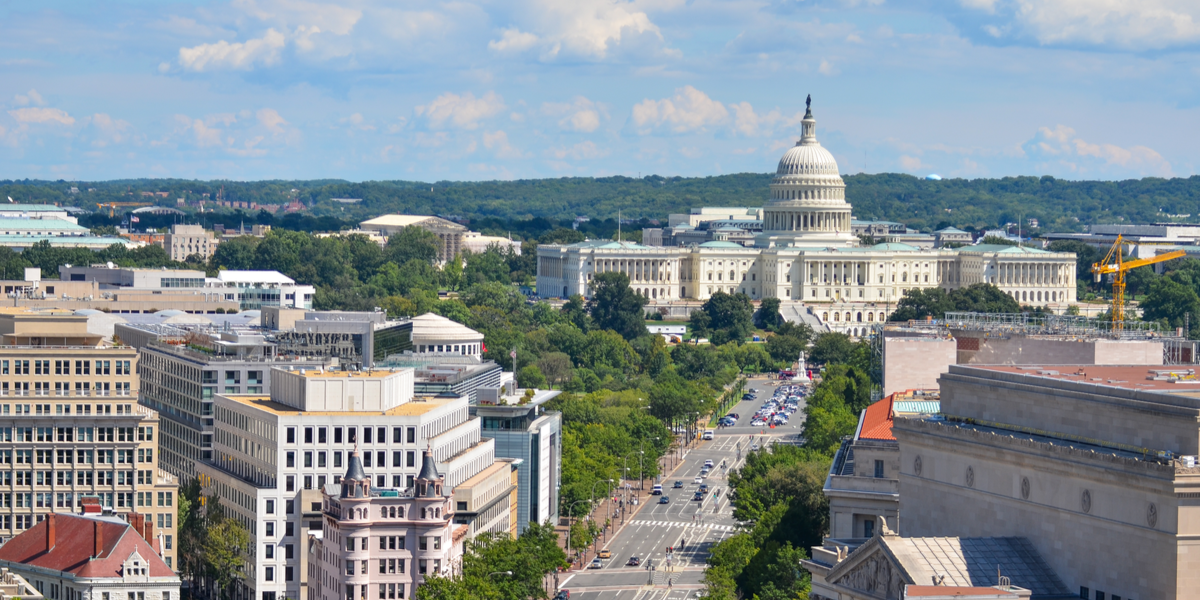Decarbonizing Buildings Through Energy Efficiency
Let's Save Energy
Alliance to Save Energy's Blog
Decarbonizing Buildings Through Energy Efficiency

Harold Jepsen, Vice President of Standards and Industry Relations at Legrand, and Guido Zucconi, Senior Manager of Government Affairs at Covestro, are co-chairs of the Alliance's Buildings Subcommittee.
In the United States, buildings present a significant, scalable opportunity to reduce carbon emissions. The World Resources Institute found that all buildings – new and existing – must be net zero carbon by 2050 to meet the goals of the Paris Agreement, yet buildings have consistently been responsible for 35% to 40% of energy-related carbon emissions in the U.S. since 1990. These levels are slowly falling, but to mitigate the worst impacts of climate change, we need a holistic, all-of-the-above approach that makes use of a suite of complementary policies to overcome long-understood barriers to decarbonization. At the core of this approach must be efforts to improve the building sector’s energy efficiency.
Energy Efficiency as a Decarbonization Tool in Buildings, and its Barriers
Energy efficiency is an essential yet underutilized tool for meeting decarbonization goals. Already, energy efficiency measures – including high-efficiency appliances and sound building envelopes – have helped reduce per-household energy consumption in the U.S. by 16% from 2005 to 2018. Efficient lighting especially has been a tremendous contributor. Though the installed lamp inventory grew 25% from 2001 to 2015 in the U.S., even before widespread LED lighting adoption, lighting energy use dropped 16% in that timeframe. Yet the remaining potential for energy efficiency is even greater: energy efficiency policies and programs hold the potential to achieve 40% of the emissions cuts needed globally by 2040 to reach the climate goals of the Paris Agreement.
So, why aren’t we amplifying energy efficiency as a powerful decarbonization tool? There are several common challenges, including:
-
Overcoming first costs. Upgrading to more efficient equipment in a building often requires upfront capital, which can be a barrier to investment. Building owners, particularly small businesses, may not have the credit to receive affordable private financing, while energy managers in municipal buildings sometimes struggle to take advantage of public-private partnerships.
- Solution: Increasing the number of incentives and long-term financing mechanisms can help identify and overcome these barriers to enable deep energy savings while mitigating the burden of upfront costs. And energy efficiency investments are typically worthwhile; for example, the American Council for an Energy-Efficient Economy (ACEEE) found that an energy efficiency retrofit that reduces a typical home’s energy consumption by 10% can deliver an 18% return on investment annually.
-
Competing priorities for resources. The best results often involve comprehensive, long-term planning. While large consumers with dedicated energy management staff fundamentally understand the benefits of efficiency investments at boosting the bottom line, that is not the majority of the market. If you’re a busy homeowner or business owner juggling lots of priorities, energy efficiency might not be top of mind as a way to cut costs or achieve sustainability goals.
- Solution. Sufficient education and programs that simplify the steps toward implementation are needed to support successful widespread efficiency opportunities.
-
Navigating the diversity of energy efficiency options. Energy efficiency works best in multi-pronged approaches. For example, sealing a building tighter, maximizing daylighting, and using advanced power strips reduce demand on the HVAC, lighting, and electronics systems respectively and allow them to be downsized. In other words, improving one element of a building can reduce the capacity needed from another element of a building. But this wide variety of approaches, and their interactive impacts, can overwhelm consumers and building owners trying to assess the compounded value of a myriad of solutions.
- Solution: There is opportunity for energy service providers, manufacturers, and utilities to collaborate further to streamline the selection process for consumers, including by aligning incentives with stakeholder needs, providing consistent messaging on benefits, and coordinating outreach to consumers. It’s challenging, but well worth it, to take a holistic approach.
Running the Gamut of Energy Efficiency
Between ongoing economic fallout due to the COVID-19 pandemic and the accelerating threat of climate change, it has never been so important to embrace the full energy efficiency spectrum to help reduce both costs and emissions. Critical foundational elements – such as tightening building envelopes and upgrading to more efficient equipment – must be leveraged alongside the opportunities presented by advanced controls, data management systems, and smart devices to enable building systems efficiency. This will require both coordinated messaging around the diversity of energy efficiency opportunities to clarify the value for customers, and streamlined processes for executing energy efficiency projects. On the Alliance to Save Energy’s Buildings Subcommittee, which we Co-Chair, we strive to emphasize the complementary nature of the full gamut of energy efficiency strategies in buildings.
The set of policies and programs that can further incentivize and raise awareness of the benefits of energy efficiency in buildings is likely as diverse as the energy efficiency strategies themselves. With all these tools in hand, it’s time for policymakers, industry experts, and other stakeholders to amplify one another’s voices that are singing the same tune of energy efficiency, because we need our collective expertise to use energy more cost-effectively and sustainably in the buildings sector.
To learn more about the Buildings Subcommittee’s work and 2021 policy priorities, visit the Alliance’s Policy and Advocacy page.
RECENT BLOG POSTS
STAY EMPOWERED
Help the Alliance advocate for policies to use energy more efficiently – supporting job creation, reduced emissions, and lower costs. Contact your member of Congress.
Energy efficiency is smart, nonpartisan, and practical. So are we. Our strength comes from an unparalleled group of Alliance Associates working collaboratively under the Alliance umbrella to pave the way for energy efficiency gains.
The power of efficiency is in your hands. Supporting the Alliance means supporting a vision for using energy more productively to achieve economic growth, a cleaner environment, and greater energy security, affordability, and reliability.



